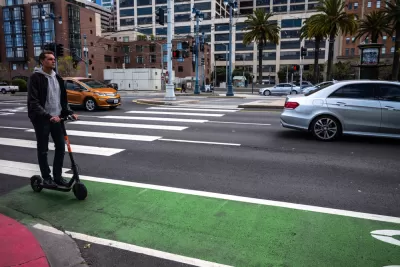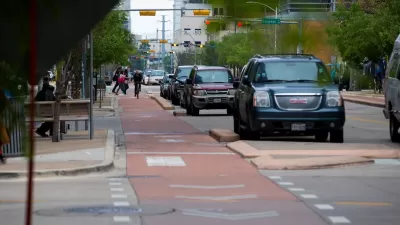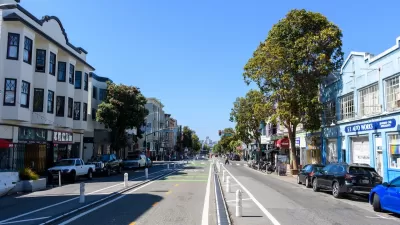With the popularity of electric scooters, it seems like non-automobile travel is gaining a large new constituency. Making room for scooters raises big questions of infrastructure that might not be answered first by nomenclature.

"In a matter of months, electric scooter companies have set up fleets in dozens of American cities," writes Angie Schmitt to raise a big question. "Where do these vehicles belong on our streets?"
"The most logical place for them seems to be bike lanes. That’s how scooter firm Bird sees it — the company wants to help cities build bike lanes so its customers can safely ride in the street without impeding people on sidewalks," according to Schmitt.
But bike lanes are for bikes, and many opponents of bike infrastructure complain about how seldom they are used. But with this new mode taking to the streets and proving very popular, perhaps it's time to completely reframe the bike lane.
Jarrett Walk suggests in a recent blog post that we rethink the different kinds of lanes on the street after carefully considering their defining qualities. The key characteristics to consider: speed and width.
All this came up because I was trying to think of the correct new term for “bike lane” as we proliferate more vehicle types that run more or less at the speed and width of bicycles but are clearly not bicycles, such as electric scooters. The two logical terms seem to be narrow lane or midspeed lane. One way or another the two concepts will need to track with each other.
FULL STORY: Do We Need a New Theory and Name for “Bike Lanes”?

Planetizen Federal Action Tracker
A weekly monitor of how Trump’s orders and actions are impacting planners and planning in America.

Restaurant Patios Were a Pandemic Win — Why Were They so Hard to Keep?
Social distancing requirements and changes in travel patterns prompted cities to pilot new uses for street and sidewalk space. Then it got complicated.

Map: Where Senate Republicans Want to Sell Your Public Lands
For public land advocates, the Senate Republicans’ proposal to sell millions of acres of public land in the West is “the biggest fight of their careers.”

Maui's Vacation Rental Debate Turns Ugly
Verbal attacks, misinformation campaigns and fistfights plague a high-stakes debate to convert thousands of vacation rentals into long-term housing.

San Francisco Suspends Traffic Calming Amidst Record Deaths
Citing “a challenging fiscal landscape,” the city will cease the program on the heels of 42 traffic deaths, including 24 pedestrians.

California Homeless Arrests, Citations Spike After Ruling
An investigation reveals that anti-homeless actions increased up to 500% after Grants Pass v. Johnson — even in cities claiming no policy change.
Urban Design for Planners 1: Software Tools
This six-course series explores essential urban design concepts using open source software and equips planners with the tools they need to participate fully in the urban design process.
Planning for Universal Design
Learn the tools for implementing Universal Design in planning regulations.
Heyer Gruel & Associates PA
JM Goldson LLC
Custer County Colorado
City of Camden Redevelopment Agency
City of Astoria
Transportation Research & Education Center (TREC) at Portland State University
Camden Redevelopment Agency
City of Claremont
Municipality of Princeton (NJ)





























